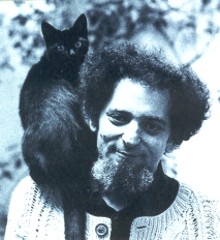Ceci n'est pas un roman
Metafiction, n. A type of fiction which self-consciously addresses the devices of fiction.
 I had an interesting conversation with a writer friend in Paris a few years ago about metafiction. He hates it, while I find it fascinating. On vacation last month, I finally found a used copy of one of the examples of the genre I have been meaning to read for years, Georges Perec's La vie, mode d'emploi (1978). It is also one of the books in my Paris Reading Project, because its protagonist is an apartment building in the French capital. The best metafiction came from the OuLiPo group (Ouvroir de littérature potentielle) in Paris, who were interested in combining literature with other things, especially word games, puzzles, and so on.
I had an interesting conversation with a writer friend in Paris a few years ago about metafiction. He hates it, while I find it fascinating. On vacation last month, I finally found a used copy of one of the examples of the genre I have been meaning to read for years, Georges Perec's La vie, mode d'emploi (1978). It is also one of the books in my Paris Reading Project, because its protagonist is an apartment building in the French capital. The best metafiction came from the OuLiPo group (Ouvroir de littérature potentielle) in Paris, who were interested in combining literature with other things, especially word games, puzzles, and so on.Perec used the Knight's Tour mathematical/chess problem to determine the order of apartments in the building described in his book. The apartment building, if imagined in a cutaway view, is a grid of 10 squares by 10 squares. Each chapter deals with one room, showing a snapshot of the space in the present, down to incredible details like what pictures or postcards are on the walls or lying on a table. Then it relates the stories of the residents, present and sometimes past. At the end of the chapter, the narrator's eye moves to the next section of the grid as a knight moves on the chessboard. The challenge of the knight's tour is that the knight has to visit all the spaces on the board without repeating any one of them. (You can try your hand at the Knight's Tour here.)
Cuban-born Italian writer Italo Calvino wrote The Cloven Viscount (1959) before he joined OuLiPo, and it may be more postmodern than metafiction. However, because it plays with how characters are described in a narratives, I think of it as metafiction. Calvino actually explodes his protagonist in half, ascribing all the good qualities to one half of the viscount and all the evil to the other. Instead of describing a character whose dual natures are at conflict within his personality, the two halves of the viscount actually fight a duel.
However, winning by a nose in my opinion is Calvino's masterful If on a Winter's Night a Traveler (1979). The premise of this book seems impossible, that is, a story told in the second person. "You" are the protagonist: you begin by just reading the book and by a sleight of hand become the main subject of the story. Again, the technical prowess is stunning, but it is the story that he weaves within the constraint that seduces. As John Updike wrote in his review in The New Yorker, Calvino "manages to charm and entertain the reader in the teeth of a scheme designed to frustrate all reasonable readerly expectations."
All four books I have selected are ratiocinative tales, a genre that fascinated the OuLiPo writers because of its puzzle-like nature. The genre goes back to Voltaire's Zadig (in English translation) and was really first classically formulated by Edgar Allan Poe in The Murders in the Rue Morgue. The classic structure of the detective tale, involving a detective who makes sense of what appears not to make sense, is not necessarily used in all of these books. However, all of them present conundra, not only of plot but of the structure of the book itself, that must be decoded and solved.




















































1 comment:
Thanks for that comment. Of course, I know of Queneau but have to admit that I have not read him yet. I will put your suggestions on my list for future reading. Thanks for reading!
Post a Comment